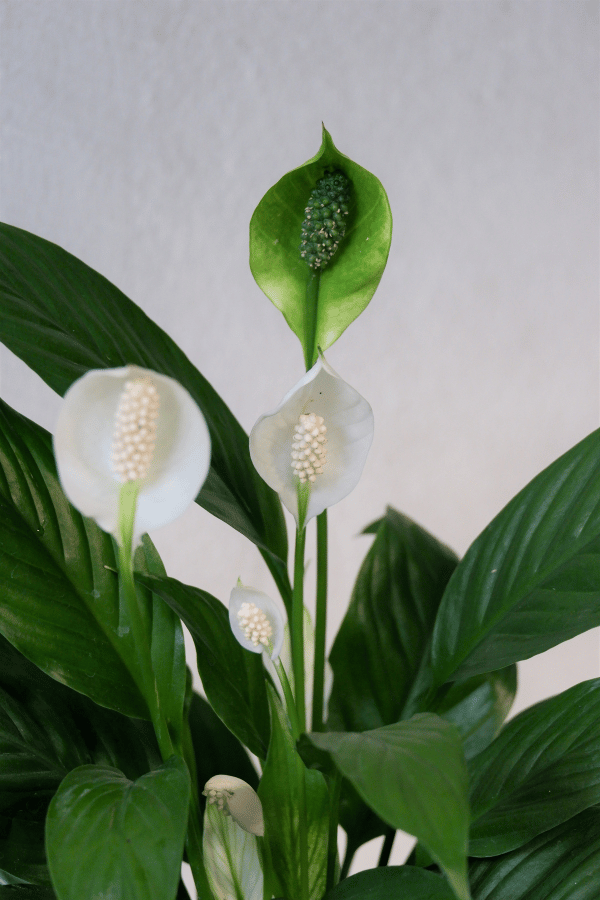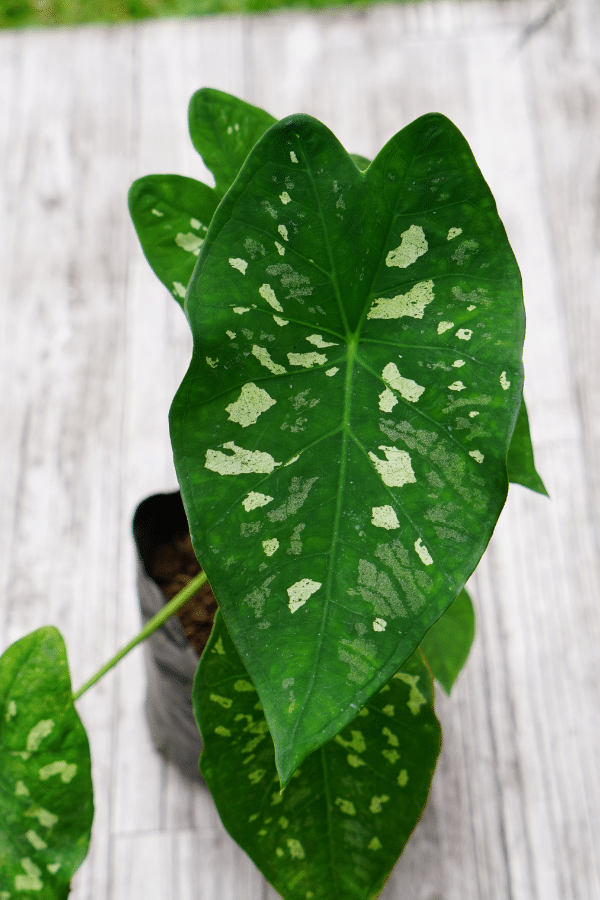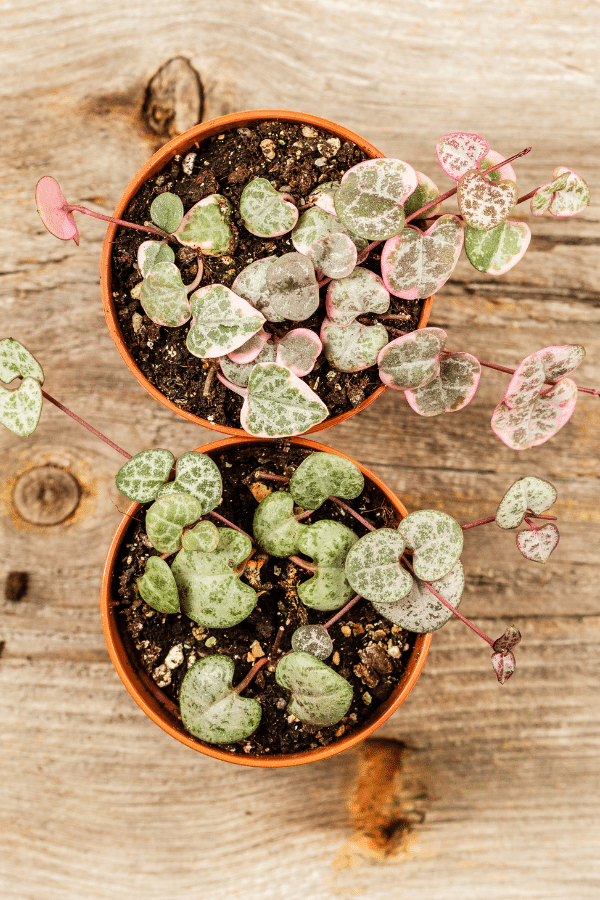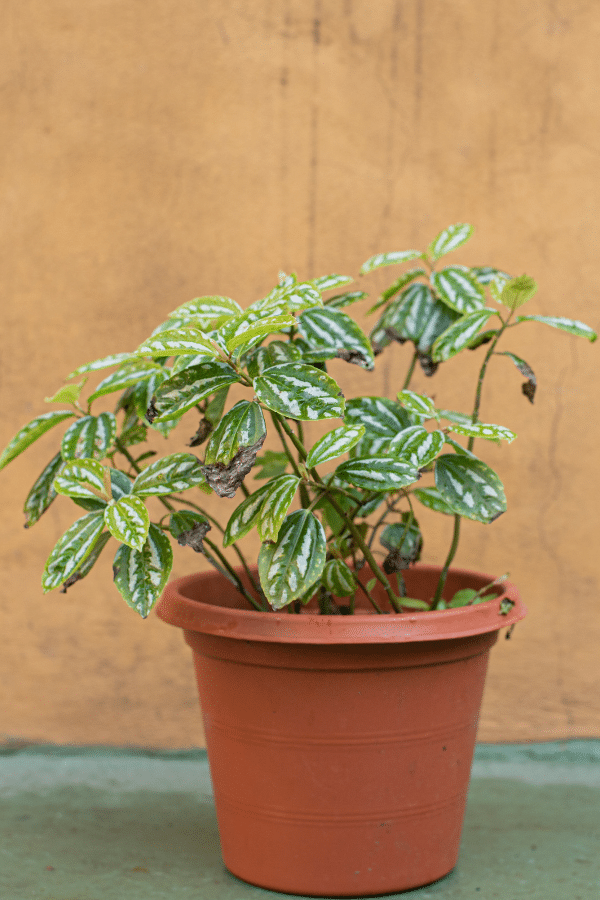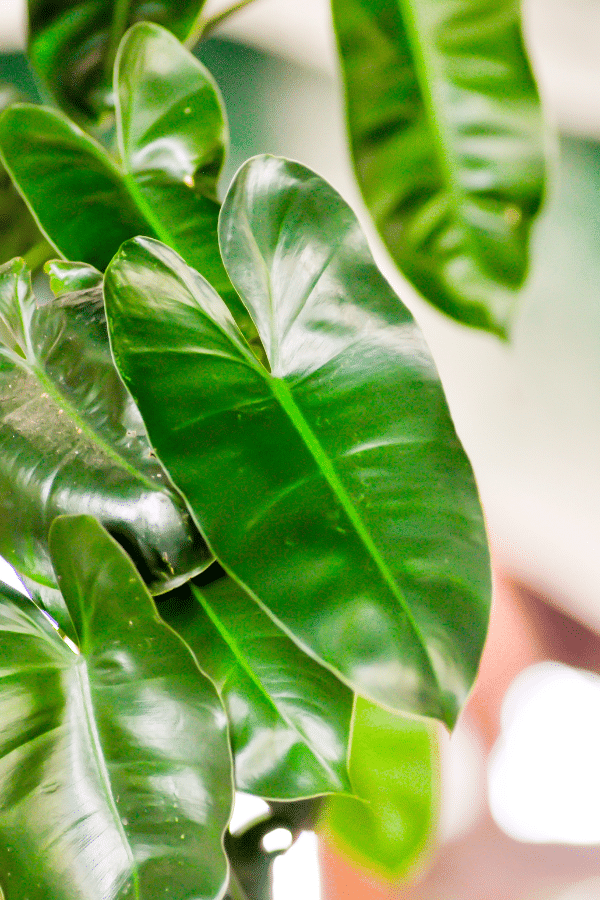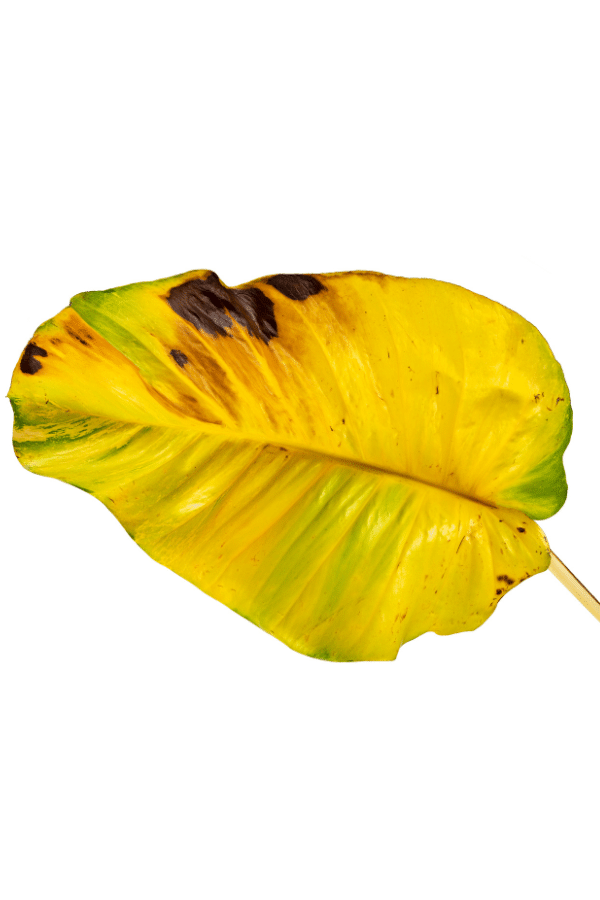Geogenanthus Ciliatus
Scientific Name: Geogenanthus Ciliatus
Geogenanthus Ciliatus care is an easy plant to grow and care for. If you’re looking for a plant with a characteristic other than green foliage but don’t want something too colorful, a Geogenanthus Ciliatus plant may be for you with its dark green to almost black foliage.
To give this Geo plant the best care, it requires well-draining soil, water when the top inch if soil is dry, provide it with bright indirect sunlight, temperatures ranging from 65-75F, and high humidity levels.
Quick Care Overview
| Common Name | Geo |
| Scientific Name | Geogenanthus Ciliatus |
| Family | Commelinaceae |
| Origin | South America |
| Growth Rate | Fast |
| Identification | Circular dark green leaves with purple center stripe |
| Height | Up to 6 inches tall |
| Soil | Well-draining soil |
| Water | Water when the top inch of soil has dried out |
| Temperature | 65-75F |
| Sunlight | Bright indirect sunlight |
| Toxic to Cats & Dogs | No |
| Toxic to Humans | No |
| Pests | Mealybugs, spider mites, thrips |
| Diseases | Root rot |
Below we will dive deep into this Geogenanthus Ciliatus care guide.
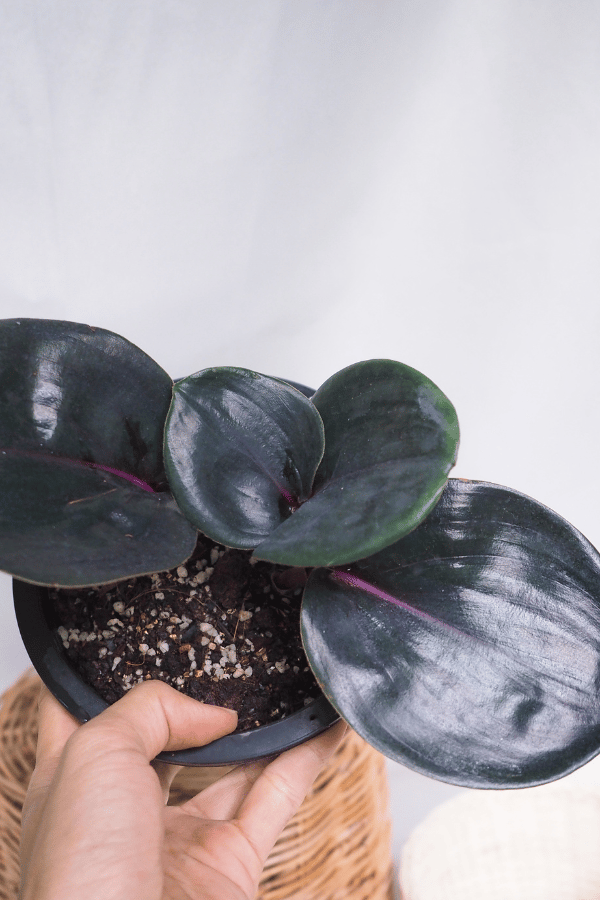
Geogenanthus Ciliatus History
South American native, Geogenanthus Ciliatus, also known as just Geo, is a gorgeous flowering tropical plant within the spiderwort family. This rare plant with green and deep purple foliage is commonly grown as an annual or ground cover that will thrive in low light conditions.
Geogenanthus Ciliatus Identification
Geogenanthus Ciliatus present with bright green young foliage that sports a purple stripe down the middle. As foliage matures, it’s succulent-type leaves will turn to a glossy dark green with a velvety dark-purple underside. Mature foliage can grow up to 8” in length.
The young leaves are bright green with a purple stripe in the middle; however, as the plant matures, the leaves change their color. The stems also have a beautiful color.
Geogenanthus Ciliatus Growth Facts
This perennial plant forms a dense mat of growth and will remain quite compact, making it perfect for smaller spaces.
How Big Does a Geogenanthus Ciliatus Get?
Geogenanthus Ciliatus will grow to about six inches tall.
Geogenanthus Ciliatus Care
Geogenanthus Ciliatus is very easy to care for. This low-maintenance plant is perfect for beginners. However, keep in mind that this plant is very sensitive to direct sunlight and requires low-light conditions to thrive.
Geogenanthus Ciliatus Soil
Geogenanthus Ciliatus is not picky about soil and will tolerate any commercial potting mix. However, a perfect growing medium for this plant would be an African violet potting mix. Additionally, you may create your own potting mix by combining peat moss or coco coir with perlite or vermiculite at a 1:1 ratio.
Geogenanthus Ciliatus Fertilizer
Your Geogenanthus Ciliatus will benefit from a monthly feeding during the spring and summer from a balanced, liquid fertilizer. Ensure that you follow all label instructions. Fertilization may be halted in the fall and winter.
Geogenanthus Ciliatus Watering
Geogenanthus Ciliatus will prefer to remain consistently moist but not oversaturated with water. Rewater your plant after the top 1-2 inches of soil has dried. Watering frequency may be reduced in winter.
Geogenanthus Ciliatus Light Requirements
When cultivated indoors, Geogenanthus Ciliatus will prefer being grown in low-light conditions. Dappled or partial sunlight is necessary to prevent the foliage of this plant from scorching. This plant does well when kept under artificial lighting such as inflorescent bulbs to create a lower-light environment.
Geogenanthus Ciliatus Temperature & Humidity
Geogenanthus is a semi-hardy plant than can tolerate a range of temperatures. However, this plant will flourish if kept in warm temperature. You should avoid exposing your plant to temperatures below 50 degrees Fahrenheit. This plant will do best if kept in high humidity. Tthe growth of your plant may benefit by frequently misting throughout the day or installing a humidifier or pebble tray. This plant likes to be kept between 50-90% humidity.
Repotting Geogenanthus Ciliatus
Geogenanthus Ciliatus should be repotted annually. Select a container that is 1-2 inches larger than the previous container. Repot your plant, refresh the soil, tamp lightly, and water thoroughly. Next, place your plant in indirect, dappled light. Alternatively, you may repot your plant into the same container, just ensure you refresh as much as the soil as possible.
Geogenanthus Ciliatus Maintenance & Pruning
Although this plant does not require much maintenance, pruning your Geogenanthus Ciliatus in winter can help promote a fuller, bushier appearance the following growing season. Additionally, any diseased, discolored, or damaged foliage and stems should be removed. Prune your plant using sharp, clean pruning shears.
Geogenanthus Ciliatus Propagation
Geogenanthus Ciliatus may be propagated easily through rhizome division or stem cuttings. Propagation should be done in spring. The tuberous root system allows you to quickly propagate this plant by dividing its rhizome into sections using a sharp clean blade. Plant the sections into their own container with fresh soil. Tamp lightly, water thoroughly, and place in indirect light.
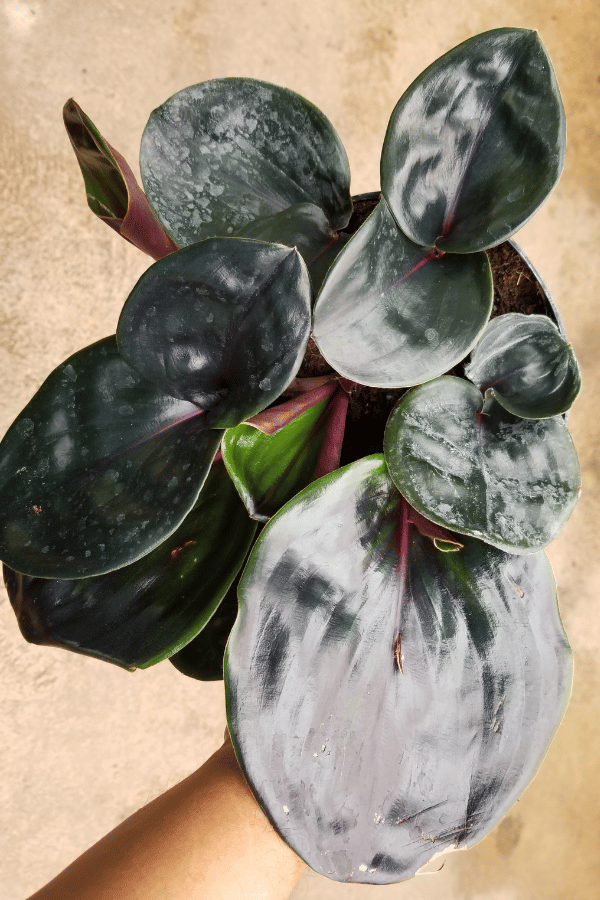
Geogenanthus Ciliatus Toxicity
Toxicity to Humans
Geogenanthus Ciliatus is not considered toxic to humans. However, this plant is still not considered edible, so avoid consuming this plant.
Toxicity to Cats & Dogs
Luckily, Geogenanthus Ciliatus is not considered toxic to pets. However, you should still avoid allowing your cat or dog to ingest this plant, as it may cause damage to the plant or digestive upset to your pet.
Geogenanthus Ciliatus Problems
Geogenanthus Ciliatus Leaves Turning Yellow
The number one cause of yellowing foliage when it comes to Geogenanthus Ciliatus is due to overwatering. Ensure that you do not overwater your plant or allow it to sit in standing water within the plant containers drainage tray. Alternatively, temperature fluctuations may cause your plant to yellow.
Geogenanthus Ciliatus Leaves Turning Brown
When the foliage of your Geogenanthus turns brown, it is typically due to too intense of direct sunlight.
Geogenanthus Ciliatus Diseases
Unfortunately, as Geogenanthus Ciliatus likes to remain in high humidity conditions and consistently moist, it can become prone to fungal disease. Upon identification of disease, isolate your plant, and treat it with a fungicide. Ensuring that you do not overwater your plant and that it also has good air circulation surrounding it can aid in the prevention of disease.
Geogenanthus Ciliatus Pests
Geogenanthus Ciliatus is susceptible to damage from common indoor houseplant pests such as mealybugs, thrips, spider mites, and more. Periodically inspect your plant for signs of disease. Upon identifying an infestation, isolate your plant, and treat it with a pesticide such as neem oil or insecticidal soap.

